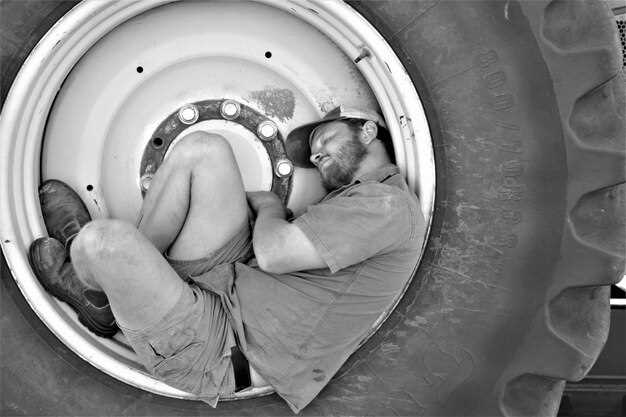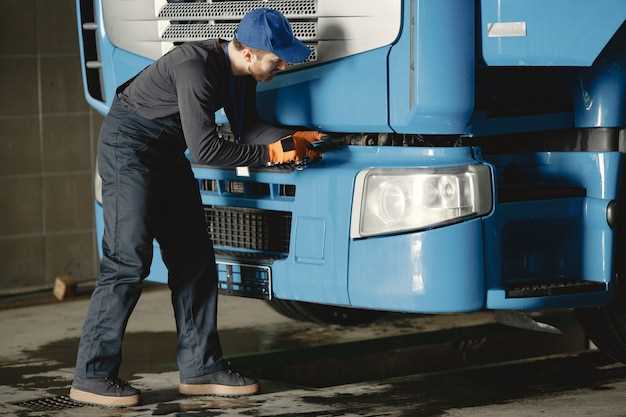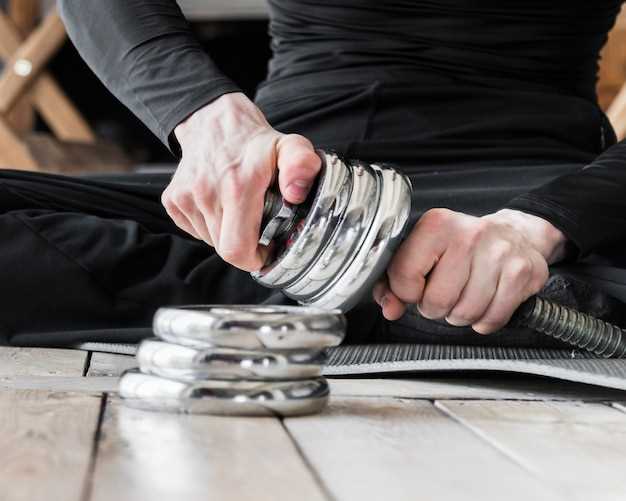
U-joints, or universal joints, play a critical role in the functionality and stability of trucks. These components are essential for transmitting torque and allowing the rotation of the drive shaft while accommodating changes in angle and alignment between different parts of the drivetrain. Understanding their mechanics can significantly impact how well a truck performs under various conditions, especially when navigating rough terrains or during sharp turns.
When U-joints are in good condition, they facilitate smooth rotation of the components, ensuring that power is efficiently transferred to the wheels. This efficiency is vital for maintaining stability, particularly in larger trucks that face challenges from weight distribution and load variations. A well-functioning U-joint reduces stress on other drivetrain parts, contributing to a vehicle’s overall stability and longevity.
However, neglecting U-joint maintenance can lead to severe repercussions. Worn or damaged U-joints can cause vibrations that compromise truck stability, potentially leading to undue strain on other mechanical systems. The impact of such imbalances can be detrimental, making it crucial for truck operators and owners to routinely inspect and replace U-joints as necessary to ensure optimal performance and safety on the road.
Analyzing U-joint Wear and Its Effects on Truck Handling

U-joints, or universal joints, play a critical role in transmitting torque and facilitating smooth rotation between components of a truck’s drive shaft. Over time, these joints can experience wear due to various factors such as environmental conditions, load stress, and lack of lubrication. Understanding the wear patterns of U-joints is essential for maintaining optimal truck handling and stability.
As U-joints wear down, their ability to facilitate smooth rotation diminishes. This deterioration can lead to misalignment and increased vibration during operation. The vibrations resulting from worn U-joints can affect the overall handling of the truck, making it more challenging to navigate turns and maintain control at higher speeds. Drivers may notice a decrease in responsiveness, leading to potential safety hazards.
Moreover, excessive wear can cause the U-joint to develop play or looseness. This play disrupts the connection between the drive shaft and the axle, complicating the transfer of power. In turn, this can lead to uneven weight distribution across the vehicle, negatively impacting stability, especially when loaded. Ultimately, compromised U-joint integrity can exacerbate uneven tire wear and affect overall vehicle handling.
Regular inspection and maintenance of U-joints are crucial to prevent excessive wear. Replacing worn or damaged joints before they fail can help maintain proper rotation and ensure that the truck handles as intended. Implementing a proactive approach to U-joint maintenance not only enhances vehicle longevity but also ensures a safer driving experience.
Evaluating the Relationship Between U-joint Alignment and Vehicle Performance

The alignment of U-joints plays a crucial role in the overall performance and stability of a vehicle. U-joints, or universal joints, are essential components in the drivetrain, enabling torque transfer between non-linear shafts. Proper alignment ensures that these joints operate smoothly, minimizing wear and tear while maximizing efficiency.
Misalignment of U-joints can lead to increased vibrations, noise, and undue stress on the drivetrain components. When U-joints are not correctly aligned, it can result in angular misalignment, which not only affects power transfer but also compromises the vehicle’s handling characteristics. In extreme cases, this misalignment can lead to premature failure of the U-joint itself or other connected parts.
Evaluating U-joint alignment involves checking the angle and positioning relative to the driveshaft and differential output. Tools such as alignment jigs or laser alignment systems can be utilized to ensure precision. When adjustments are made to the U-joint angles, improvements in vehicle dynamics can often be observed, including enhanced steering response and better overall ride comfort.
Furthermore, aligned U-joints contribute to balanced weight distribution across the vehicle, which is essential for maintaining stability, especially while cornering or during sudden maneuvers. This balance helps to ensure that all components of the drivetrain work harmoniously, reducing the risk of accidents caused by instability.
In conclusion, the relationship between U-joint alignment and vehicle performance is significant. Regular maintenance checks and alignment evaluations can lead to improved vehicle longevity and optimal performance, safeguarding against potential issues that arise from misaligned U-joints. Ensuring proper U-joint alignment is a critical aspect of vehicle safety and efficiency, making it a priority for vehicle owners and service professionals alike.
Identifying Signs of U-joint Failure That Affect Stability
U-joints, or universal joints, play a critical role in the driveline of trucks by connecting different shafts and allowing for flexibility in motion. Recognizing the signs of u-joint failure is essential for maintaining vehicle stability and safety. Various indicators can suggest that your u-joint may be failing.
One of the primary signs of u-joint failure is a noticeable increase in vibration while driving. If you experience excessive vibrations, particularly during acceleration, this could indicate worn or damaged u-joints. Such vibrations can lead to instability, affecting overall vehicle control.
Another common symptom is unusual noises, such as clunking, squeaking, or grinding. These sounds often occur during gear shifts or when the vehicle accelerates. If the u-joint is deteriorating, the internal components may not function smoothly, causing these disruptive noises and compromising stability.
In addition to vibrations and noises, vehicle handling issues may arise. If your truck feels unstable during turns or experiences a wandering sensation on straight roads, it could be a sign that the u-joint is failing. This instability can result from a misalignment caused by a compromised joint.
Visual inspection is also essential in identifying u-joint failure. Look for signs of rust, wear, or physical damage on the u-joint itself. A damaged u-joint may exhibit abnormal movement or play when subjected to manual force. If you notice any of these physical signs, it is crucial to address the issue promptly.
Finally, if you detect grease leakage around the u-joint area, it may indicate a failing seal or bearing. Loss of lubrication can accelerate wear and lead to catastrophic u-joint failure, further jeopardizing truck stability.
Addressing u-joint issues early can prevent more significant problems that compromise your truck’s stability and safety. Regular maintenance and timely inspections are key to ensuring your vehicle remains in optimal working condition.




